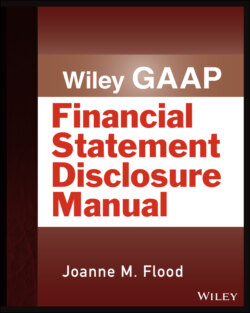Читать книгу Wiley GAAP: Financial Statement Disclosure Manual - Joanne M. Flood - Страница 122
Property and Equipment and Depreciation Methods
ОглавлениеExample 7.41: Property and Equipment, Net, Straight‐Line Depreciation Method and Impairment Policy Net property and equipment are stated at historical cost less accumulated depreciation. Historical cost comprises its purchase price and any directly attributable costs of bringing the assets to its working condition and location for its intended use. Depreciation is calculated on a straight‐line basis over the following estimated useful lives:
| Buildings | 20 years |
| Motor vehicles | 5–10 years |
| Furniture and office equipment | 3–5 years |
| Leasehold improvements | Shorter of lease term or useful lives |
The carrying value of a long‐lived asset is considered impaired by the Company when the anticipated undiscounted cash flows from such asset is less than its carrying value. If impairment is identified, a loss is recognized based on the amount by which the carrying value exceeds the fair value of the long‐lived asset. Fair value is determined primarily using the anticipated cash flows discounted at a rate commensurate with the risk involved or based on independent appraisals. Management has determined that there were no impairments at the balance sheet dates.
Example 7.42: Property and Equipment, Net, Declining Balance Depreciation Method Property and equipment are stated at cost. Expenditures for maintenance and repairs are charged to earnings as incurred; additions, renewals and betterments are capitalized. When property and equipment are retired or otherwise disposed of, the related cost and accumulated depreciation are removed from the respective accounts, and any gain or loss is included in operations. Depreciation of property and equipment is provided using the declining balance method for substantially all assets with estimated lives as follows:
| Leasehold improvements | 5 years |
| Clinical equipment | 5 years |
| Computer equipment | 3 years |
| Office equipment | 5 years |
| Furniture and fixtures | 5 years |
Example 7.43: Long‐lived Assets—Impairment or Disposal The Company applies the provisions of ASC Topic 360, Property, Plant, and Equipment, which addresses financial accounting and reporting for the impairment or disposal of long‐lived assets. ASC 360 requires impairment losses to be recorded on long‐lived assets used in operations when indicators of impairment are present and the discounted cash flows estimated to be generated by those assets are less than the assets' carrying amounts. In that event, a loss is recognized based on the amount by which the carrying amount exceeds the fair value of the long‐lived assets. Loss on long‐lived assets to be disposed of is determined in a similar manner, except that fair values are reduced for the cost of disposal. Based on its review at August 31, 20X2 and 20X1, the Company believes there was no impairment of its long‐lived assets.
